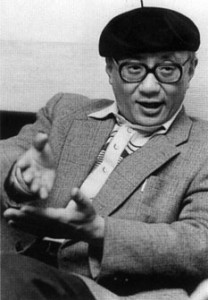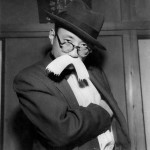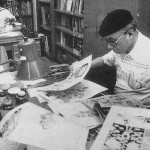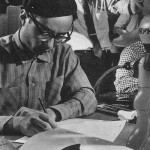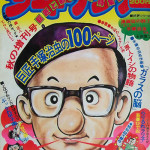About Osamu Tezuka
Osamu Tezuka (1928-1989), the “God of Manga”, was arguably the greatest manga/anime artist of the 20th Century, and had it not been for him, Japanese anime and manga would not be what they are today. Although best known (especially outside Japan) as the creator of Astro Boy, the “boy robot with 100,000 horsepower”, he was instrumental in developing (if not outright creating) nearly every genre of manga in existence today. Despite being often referred to as the “Walt Disney of Japan”, Helen McCarthy, author of The Art of Osamu Tezuka: God of Manga, sums it up best by saying Tezuka “was more like Walt Disney, Stan Lee, Jack Kirby, Tim Burton, Arthur C. Clarke, and Carl Sagan all rolled into one incredibly prolific creator” (2009, p.8).
However, the word “prolific” is a bit of an understatement. Over the course of his 40-year career, Tezuka created more than 700 volumes of manga, encompassing an estimated 150,000 pages of drawings. He also produced another 200,000 pages of storyboards and scripts for nearly 500 episodes of a variety of popular animated T.V. series and numerous award-winning short and feature-length animated films.
Foreign visitors to Japan often find it difficult to understand why Japanese people like comics so much… One explanation for the popularity of comics in Japan is that Japan had Osamu Tezuka, whereas other nations did not.”
– Asahi Shinbun (February 10, 1989)
Yet, behind the comparisons and staggering numbers, Tezuka was a down-right interesting character in his own right. Even his name has an interesting story. While his actual name, written in Japanese is Tezuka Osamu (手塚治), as a child he discovered a ground beetle known as “osamushi” and decided to adopt the character for insect, “mushi” (虫), and append it as his pen name (手塚治虫). This life-long fascination with insects also led him to name his first production studio Mushi Productions.
A licensed Doctor, though he never practiced medicine, Tezuka was also extremely well-read and a huge film buff – regularly watching upwards of 350 films a year. Despite his unforgiving schedule, one in which a deadline was forever looming, Tezuka developed a system whereby he could maximize his efforts by moving from theater to theater, so that he could watch a specific bit of cinematography that interested him in one film and still catch a particular action sequence in another.

